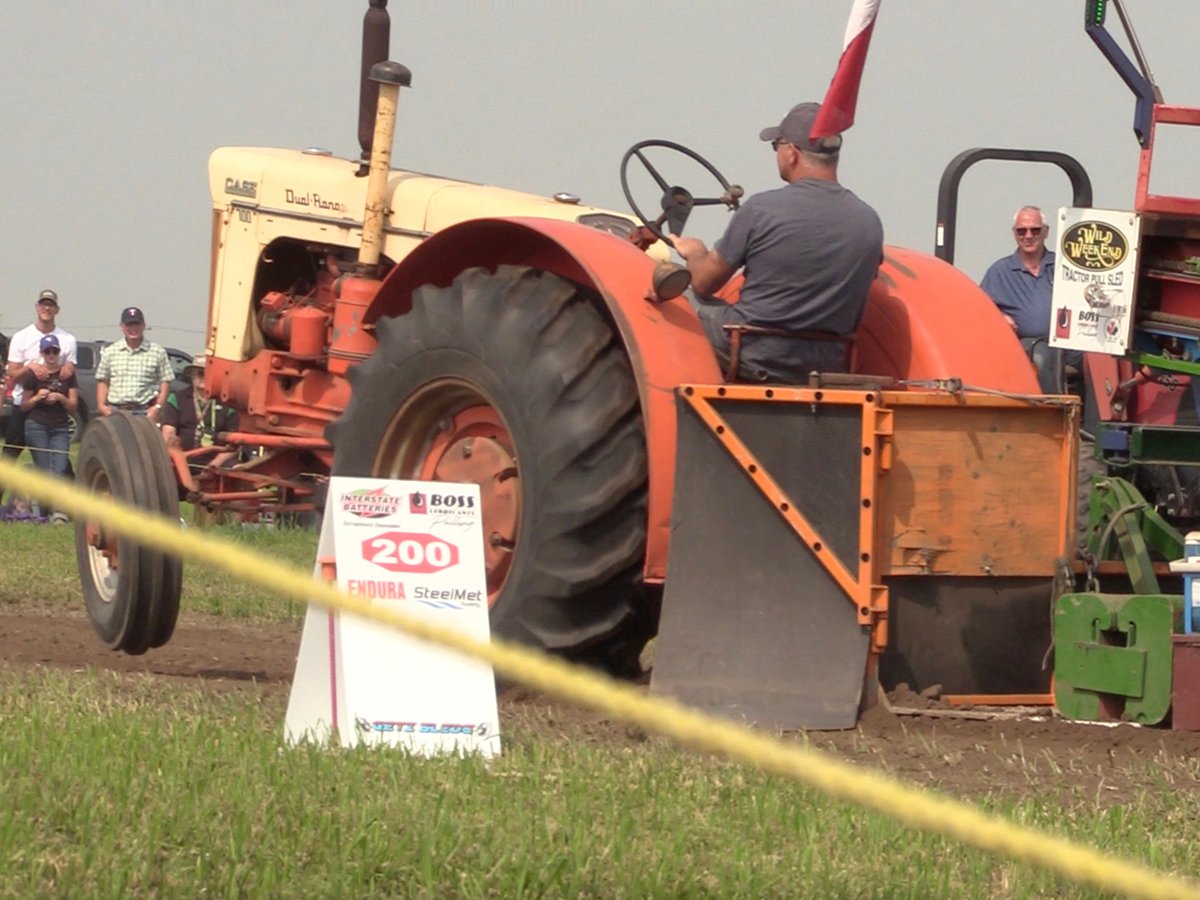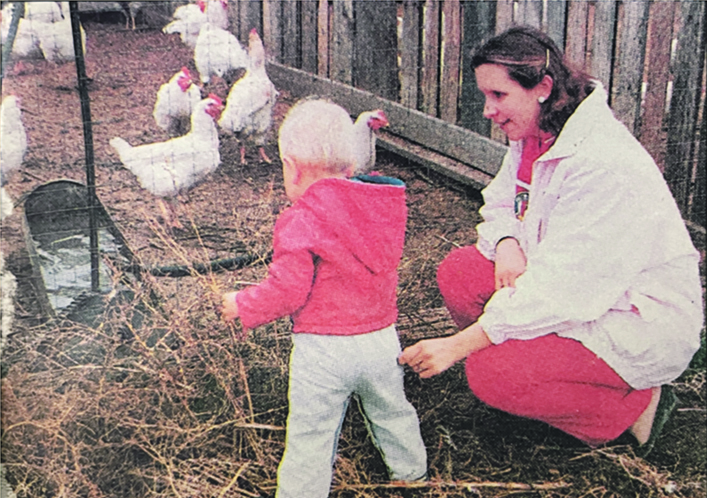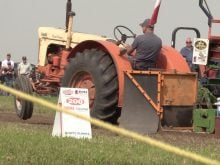The disastrous economic situation of the 1980s was the result of changes in oil production in the Middle East, a worldwide recession, record high interest rates, inflation and drought.
High interest rates were the main concern of farmers in the summer of 1981, a Canadian Bankers’ Association poll discovered. Inflation caused fuel prices to rise and farm input costs to skyrocket. To meet loan payments and operating costs, farmers and/or their wives sought other sources of income.
During the early 1980s, the Bank of Canada drastically increased interest rates to stem runaway double-digit inflation that was wreaking havoc with the economy. The unprecedented increases saw a five-year, fixed-rate mortgage increase to more than 15 per cent, reaching a peak of 21 per cent during the last half of 1981.
Read Also

Vintage power on display at Saskatchewan tractor pull
At the Ag in Motion farm show held earlier this year near Langham, Sask., a vintage tractor pull event drew pretty significant crowds of show goers, who were mostly farmers.
Interest rates never fell below 10 per cent for the next 18 years, and these high rates were disastrous for farmers and rural businesses.
On Oct. 8, 1981, Farm Credit Corporation announced its loan interest rate would immediately increase to 16.75 per cent from 14 per cent until at least April 1, 1982.
The 1980s brought drought conditions to the Prairies that were similar to the 1930s. During 1988, southern Saskatchewan received less than half the normal rainfall and recorded one of the hottest summers ever.
Thankfully, the impacts of drought were less severe because of improved soil conservation methods, new and better crop varieties that tolerated the dry conditions and use of government programs.
The rapidly escalating costs of herbicides may have had a bearing on the increased number of thefts in Alberta during the fall of 1981. More than $12,000 worth of herbicides were stolen from an Alberta Wheat Pool depot in one theft.
A 15 per cent increase in the cost of herbicides had occurred during the past year, making the chemicals a lucrative target. The other problem was “it was practically impossible to identify who the rightful owner was,” stated an RCMP spokesperson in November 1981.
Food prices rose by 13 per cent in 1981 and during the previous four years, food prices had increased by 10 per cent or more.

“Since food makes up 20 percent of the average family’s budget, food price performance will have to improve substantially if inflation is ever to come under control,” stated the Bank of Montreal’s Monthly Business Review in November 1981.
First class postal rates increased on Jan. 1, 1982, to 30 cents per letter from 17 cents, a 76 percent increase.
A growing number of farm women were working at off-farm jobs because farms were struggling to pay for themselves. Wendy Roy, Farm Living editor of The Western Producer, interviewed a number of farm women to learn how they balanced both jobs. The off-farm income was used to cover family living expenses and, in some cases, farm expenses.
For Jo Domotor of Davidson, Sask., her husband had been away with a road construction business for the past two summers. Domotor and her teenage son were in charge of summer fallowing, swathing and baling, as well as driving truck during harvest.
She also worked full time as a waitress in a local restaurant and volunteered as the general leader for the local 4-H club and president of the figure skating association. The previous summer, Domotor had also raised and butchered 200 turkeys. On a regular basis she kept the farm records, went for parts, helped sort cattle and fixed corrals.
In an Oct. 6, 1988, Western Producer interview, she said she never wanted to take charge of the farm and work full-time again.
“You can’t keep up a pace like that for very long,” Domotor was quoted as saying. “Farm women learn to be good jugglers.”
Her three daughters also learned to make meals and keep the house clean.
Linda Ungar of Dubuc, Sask., felt that “if farmers could get a proper price for their commodities” then off-farm work would not be necessary. Ungar raised goats, turkeys and pigs and milked cows so she did not have to take off-farm work.
In 1987, Linda Pipke of Davidson, Sask., worked on a research project about farm families under stress. She realized farm families needed information centres to provide advice about finances, farming and family problems.
“Women who feel overworked need strong support from friends and family,” said Pipke.
Jackie Jevne, who lived with four generations on a single farm, said “interpersonal stress is a great threat to farm families.”
She shared her comment at a Farm Wives Conference in High Prairie, Alta. Quoting a survey by Furrow magazine, she said “the results showed 80 percent of farmers suffer more stress than they did 10 years ago.”
In addition to more off-farm activities, farming changed from physical work toward more mental activity, Jevne added. Because major management decisions often have to be made, it is often a lonely job. There are a lot of variables — prices, weather and relationships — and these pressures are passed on to farm wives and children.
Farm women need to develop coping skills and interpersonal skills. Jevne said that about 70 per cent of the women in her area worked off the farm, but were not necessarily working for money.
The economy and lack of opportunities in rural communities caused many rural and farm youth to move into cities or places with more jobs, such as the Alberta oil patch.

In 1980, about 446,000 Canadians moved to another province. Alberta and British Columbiahad gains, while Ontario had the biggest net loss of about 33,000, The Western Producer reported in October 1981.
In that same month, the Producer noted that many Prairie residents were choosing to move to Vancouver Island for their retirement because the climate was milder and homes were reasonably priced in the Nanaimo and Parksville areas.
For those who had money to invest in late 1981, Canada Savings Bonds paid 19.5 per cent interest during the first year.
Following a fierce 18 months of political and legal struggle, The Constitution Act of 1982 achieved full independence for Canada by allowing the country to change its constitution without approval from Britain. It also enshrined the Charter of Rights and Freedoms in Canada’s Constitution, the highest law of the land.
Betty Ann Deobald, one of The Western Producer’s TEAM Resources columnists, will write a monthly column for the next year examining rural life in each decade of the last century.


















